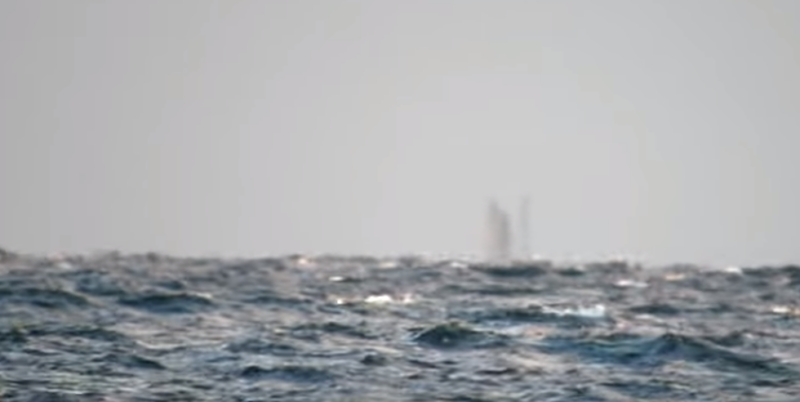The SS Bannockburn or, ‘The Flying Dutchman’ of Lake Superior

The Great Lakes of North America, covering nearly 95,000 square miles, make up the largest freshwater system on our planet. While water vessels of all sizes have used the lakes for transport, freight, and pleasure, not everyone and every ship makes it safely back home. To date there have been over 6,000 shipwrecks throughout the five Great Lakes that have taken at least 30,000 unfortunate souls with them down into the icy depths. The majority of these shipwrecks have gone undiscovered. And other lost ships, such as the infamous SS Bannockburn, continue to be spotted on the misty horizon over a hundred years after vanishing without a trace.
The Canadian lake freighter Bannockburn was carrying a crew of 20 when she was last seen on 21 November 1902. Captained by Ontarians George R. Wood of Port Dalhousie and chief engineer George Booth of Kingston, the ship was transporting bushels of grain from Fort William to Midland when she failed to reach her final destination. That evening, management at the Montreal Transportation Company was informed that their ship had seemingly vanished. Concerns about a weather-related accident arose since one of the worst snowstorms of that year had hit Lake Superior the previous day. The conditions, as relayed by other boats on the lake that day, made it difficult to tell the difference between water and sheets of dangerous ice.
With most of the young crew from Kingston, the city was beside itself with worry. Did she go off course and become lost? Did she run ashore on an island with her crew alive and well? Or was she now sitting in her eternal tomb at the bottom of Lake Superior?
The last alleged sighting of Bannockburn before her disappearance was recorded by Captain James McMaugh of the SS Algonquin. According to McMaugh, he spotted what he believed to be the Bannockburn the day she went missing. He claimed the ship disappeared rather suddenly, but blamed it on the misty weather conditions. The next sighting occurred the following day by night crew aboard the passenger steamer SS Huronic who saw the Bannockburn without realizing she had disappeared. Stormy weather had been reported that night, but when Huronic passed the Bannockburn, they did not see any signs of distress. Since the Bannockburn had likely already sunk by the time Huronic saw her sailing through the dark night waters, the report inspired eventual rumors that the spirit of the Bannockburn had become a spectral ship.
Other sightings of the ship were reported, and at one point the families of the missing men were informed they were alive. However, it was soon believed that the sightings weren’t of the Bannockburn that set sail on its final journey from Fort William, but a ghostly Bannockburn that carried a phantom crew who would never see land again.
On 28 November the Algonquin’s captain reported suspicion that the Bannockburn had suffered from a boiler explosion. Two days later on 30 November it was reported that the SS Rockefeller sailed through a significant amount of wreckage during her journey through Lake Superior, supporting the Algonquin captain’s theory. However, a search of the area failed to find any traces of the alleged debris. Finally on 13 December a life preserver from the Bannockburn, the only physical evidence that the lost ship ever existed on this earth, was found on a nearby beach.
So what happened to the SS Bannockburn? Did she, like the famed Titanic, strike ice and sink to a watery grave? Did her boilers, as proposed by Captain McMaugh, explode and destroy the ship in a fiery blaze?Or did she stumble through a tear in reality, only appearing when her distorted form phases in and out of our dimension? If sightings of the Bannockburn hadn’t been so adamantly reported in the immediate aftermath of her sinking, perhaps the mystery of her disappearance wouldn’t be nearly as confusing. Regardless, the ship and members of her crew have never been recovered. But with continuing improvements to sonar technology, there’s hope that the restless souls of the lost men will eventually be put to rest if the Bannockburn is found and her mystery solved.
According to mythology passed between sailors of Great Lake vessels, the Bannockburn “sailed through a crack in the Lake” much like other ships that vanished within the same area (Ratigan 1989). Whether the crack in the Lake refers to a dimensional rift or a one-way ticket to Davy Jones’s locker, the spirit of the Bannockburn has remained restless. Reports of the ghost ship have occurred since she vanished over a century ago. She’s said to eternally sail through Lake Superior, spotted by sailors through the fog or stormy seas. While Bannockburn doesn’t place a curse on sailors like the original Flying Dutchman, her ghostly appearance is a memento mori and stark reminder that the journey home isn’t always a guarantee.
It could be said that the Bannockburn was destined to rest for eternity in the dark depths of the lake. Prior to her disappearance, the ship had already sunk once before. On 15 October 1897 when traveling through Lock No. 17 of the Welland Canal, the Bannockburn hit the wall and began to sink. Having not fully submerged, she was luckily salvaged. But when braving the raging seas, a ship’s luck can only last for so long.

Sources and Additional Reading
Baillod, Brendon. “Revisiting the Bannockburn: Lake Superior’s Flying Dutchman.” Shipwreck World, 19 Feb. 2020
Graham, Alyssa. Know the Ropes: Don’t ’Bannock’! It’s Just a Ghost Ship.
Landon, Fred. The Loss of the BANNOCKBURN – Winter 1957. 16 Feb. 2021.
Ratigan, William. Great Lakes Shipwrecks and Survivals. Wm. B. Eerdmans Publishing, 1989.
Smith, Barbara. Ontario Ghost Stories. Ghost House Pub., 2002.
